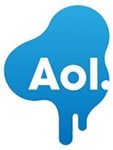ExchangeWire European Weekly Round-up
by on 20th Feb 2015 in News

ExchangeWire rounds up some of the biggest stories taking place over the last seven days, and in this week’s edition: Facebook takes the battle to Google, this time on Product Listing Ads; Criteo continues to see strong gains; LinkedIn's ad tech play; AOL's cross-screen push; Agencies still struggle with mobile.
More Facebook vs Google
Facebook this week announced a retargeting tool Facebook Product Ads, helping businesses target specific audiences within the social network, adding fuel to the fire of who will dominate the online ad space,
The new service means marketers can upload their product catalogue and create campaigns targeting certain products to specific audiences, or let Facebook automatically deliver ads for relevant products to the profiles of people it thinks are most likely to convert.
Facebook Product Ads lets advertisers display their products in single- or multi-product ad units, and can be customised for use throughout the customer journey, from discovery/awareness through to purchase, according to the social network.
The service is available via the Facebook API with Facebook Marketing Partners including Criteo (read more below), and Stitcher Ads, among others.
Facebook adoption as a direct response marketing machine is at an inflection point, especially since its cross-device targeting capabilities are widely expected to outstrip Google's.
This again brings the social network into direct conflict with Google, whose Google Shopping Ads are likely to be the biggest casualty to this launch.
Criteo posts strong revenue gains
 France-based Criteo this week announced revenues of €233m for the latest quarter (up 71% year-on-year), in addition to the acquisition of LA-based DataPop, a products listing company that will enable it to better connect advertisers' products to a web user's purchase intent.
France-based Criteo this week announced revenues of €233m for the latest quarter (up 71% year-on-year), in addition to the acquisition of LA-based DataPop, a products listing company that will enable it to better connect advertisers' products to a web user's purchase intent.
Europe remains Criteo's biggest market, with EMEA accounting for approximately 48% of their global revenue, according to the latest quarterly figures; but the Americas remain its highest growth region, with the company reporting an 88% increase in year-on-year revenues there. Criteo additionally notes that advertisers using its cross-screen solutions are a significant growth driver. Criteo also reports that it expected revenue for the current quarter to be between €96m and €99m.
As stated above, Criteo also used the DataPop acquisition (the purchase fee was not publicly discussed) as a means for it to further accelerate its revenue growth, given its status as an early Facebook Product Ads partner.
Criteo cited results from an early pilot program conducted with clients including e-retailers Menlook and Promod demonstrating that the average sales attributed to dynamic product ads accounted for 6.2% of all sales, with its performance on mobile devices performing particularly well, according to the company.
Jonathan Wolf, Criteo, chief product officer, said: "People spend more time on Facebook’s mobile app than on any other single app, so it is a critical place for retailers to reach their customers.
"With dynamic product ads, Criteo delivers relevant and timely messages to these users, and so generates post-click sales and strong return on ad spend for our clients."
 AOL announces cross-device marketing technology
AOL announces cross-device marketing technology
Similarly, AOL this week announced the availability of a 'cross-device linking technology' that lets advertisers syndicate their messaging across screens, not just on individual devices in the UK.
AOL's messaging is similar to Facebook's mantra of offering 'people-centric' messaging, rather than 'device-centric' marketing, and uses a combination of deterministic and probabilistic modeling, built using a blend of first- and third-party data sources, which gives it a match rate of 93%, according to the company.
UK-based ISP TalkTalk was one of the first brands to experiment with the service and was able to generate a sales uplift of 101%, according to AOL, with 38% of those sales linked to multiple devices throughout the campaign.
Matt King, AOL, senior commercial, mobile manager, UK, said the approach would help brands target users who 'window shop' on their mobile, and then convert on desktop.
He said: "Device Linking enables advertisers to reevaluate how they engage with audiences; moving away from the siloed targeting of individual devices and towards a single meaningful conversation with their audience, regardless of their consumption habits. Device-linking enables brands to reach consumers on multiple platforms and tailor the content for each channel, whilst optimising towards holistic results and reducing duplicate ads and waste.”
LinkedIn this week announced its latest move towards an ad tech-led future, with the unveiling of a prospecting tool dubbed LinkedIn Lead Accelerator allowing marketers to retarget users, and possible heralding the rise of the B2B ad network.
The service lets marketers retarget visitors to their company’s website using a series of ‘sequential messages’ on both the LinkedIn display ad network, as well as third-party sites (such as third-party websites, and paid-for social opportunities), over a six-week period.
LinkedIn also lets trade marketers target users using a number of criteria, such as seniority level, and geography, by placing a pixel on an advertisers’ page, then layering LinkedIn data on top of that.
This ‘sequential messaging’ can be executed on desktop sites as well as on LinkedIn’s mobile properties, and is available to marketers on a subscription basis, according to Joshua Graff, LinkedIn, senior director, EMEA.
LinkedIn is using the service to take advantage of the B2B advertising market, and is pursuing an ad tech-led strategy primarily through a partnership with AppNexus, which currently powers its existing LinkedIn Display Network.
This effectively will enable the business network emulate Facebook's strategy in the B2B arena (which is reported to be worth $50bn per year).
 Despite cross-screen push, mobile still poses problems
Despite cross-screen push, mobile still poses problems
Separate studies this week demonstrated how digital advertising budgets are soon to account for over half of all media spend, but ad agency staff are struggling to cope with the transition to mobile when it comes to important issues such as privacy and brand safety.
A report from Strategy Analytics forecast that half of all UK advertising spend in 2015 will go to the internet and mobile devices for the first time; with the total amount spent on such channels approaching £8bn for the year.
UK ad spend, overall, is predicted to grow 5.4% to £15.8bn, with nearly £8bn forecast to be spent on digital advertising in 2015 – over twice that spent on TV (£3.8bn, 24% share). Print then follows at £2.5bn (16%), outdoor (£910m), radio (£492m) and cinema (£179m) will account for the remaining 10%, according to the study.
However, a separate pan-European report from the IAB reveals that 27% of UK media agencies employees have 'no idea' how to comply with mobile privacy, and 22% have 'no idea' about brand safety on mobile. This is despite 'general mobile advertising knowledge'. They're seeing a 23% increase in the last year.
The IAB Agency Snapshot Study, conducted by YouGov, quizzed staff from across the UK, France, Germany, Italy to assess agency approaches to mobile advertising over the last year, with over 154 media agency employees across the UK taking part.
The study revealed there has been a shift in who is driving the mobile movement within media agencies, with 49% of UK media agency employees surveyed claiming mobile is now a regular part of client proposals, rising from 38% in 2013.
However mobile programmatic, brand safety and mobile privacy are topics of concern for media agencies – all of which came out on top as areas in which they felt they had the lowest level of understanding.
Ad NetworkAdvertiserAgencyCross-ChannelDataDigital MarketingDisplayEMEAFacebookGoogleMobileRegulationTargetingTrading









Follow ExchangeWire